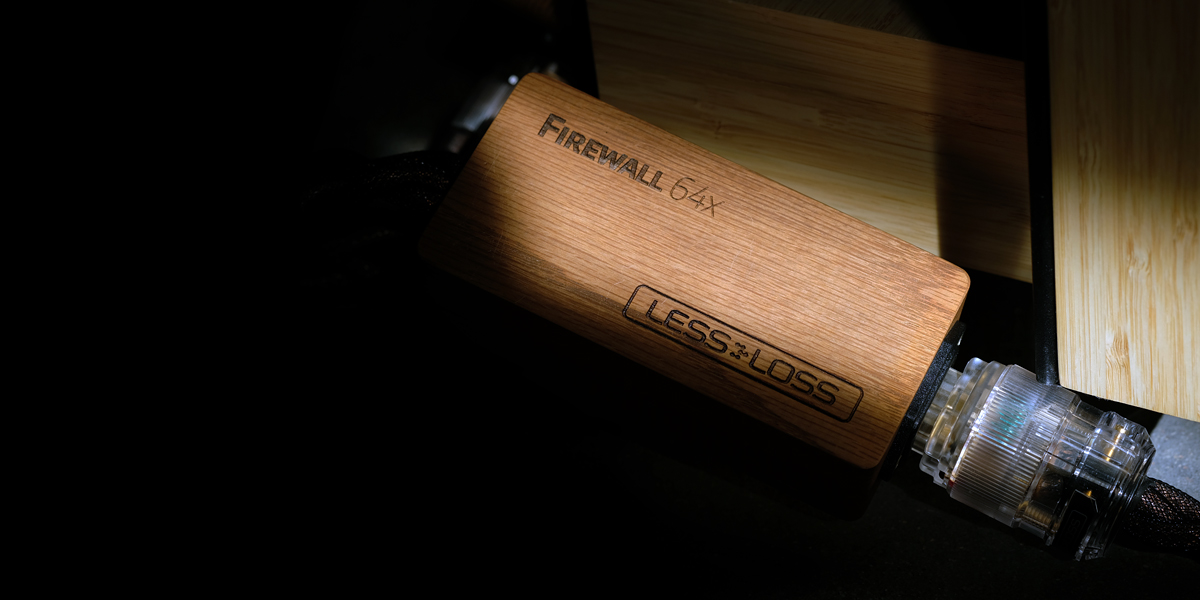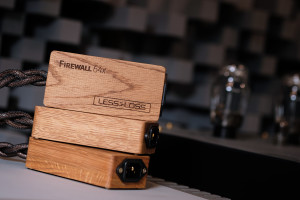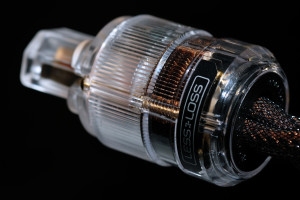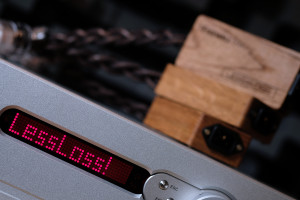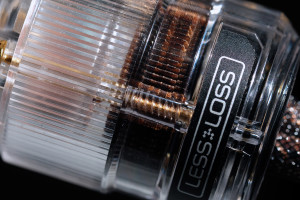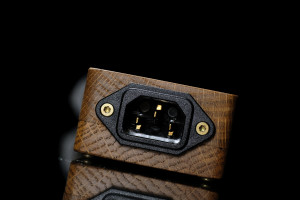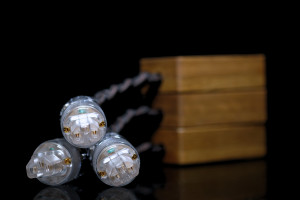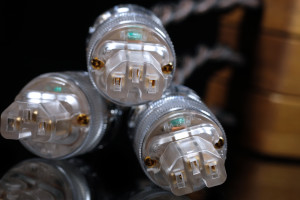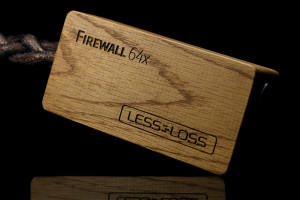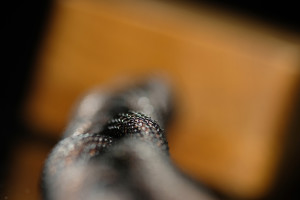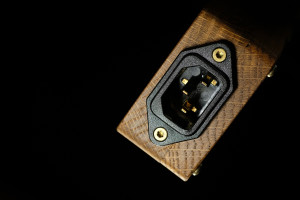Most households’ power lines are plagued with noise, and as such are one of the key fundamentals to address in audio. This review is all about upping the ante on this specific count via very unusual LessLoss C-MARC Firewall 64X noise killers. Enjoy!
Introduction
This report we’ll start by inspecting an audiophile knee deep in his audio hobby. Room acoustics sorted? Check. A comfy chair on duty? Yessir! All key hardware purchased and on a proper rack? Yup, done ages ago. A separate power line for these too? But of course. Conditioned further? Please. Speaker, power, network snakes etc. dandy? C’mon… That’s one proper enthusiast right there, fully ready to settle down. Not. Audiophilia nervosa doesn’t fade away, since day one this particular itch has been telling our man to constantly push forward, fly higher, spend more. Early on the audio route is rather easy, but at some point the time to rethink and re-evaluate all audio goods amassed thus far has to come. That’s just part of the game.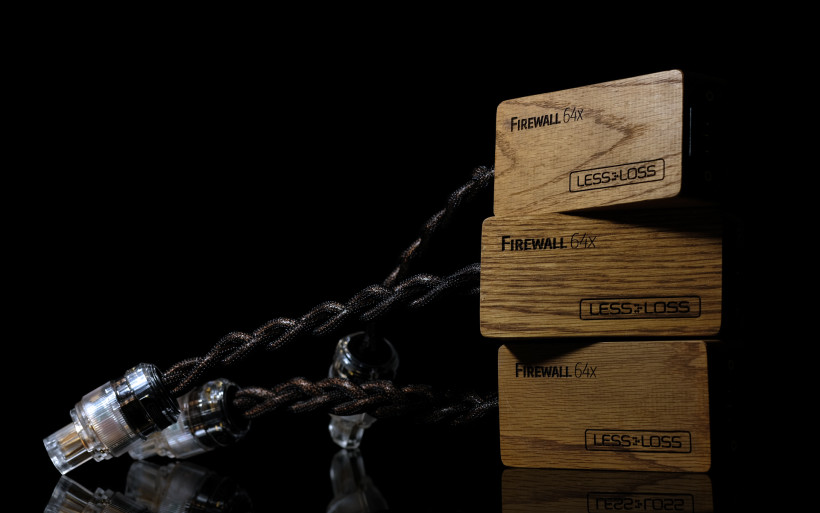 From there it’s either bye-bye to one or two crucial components or, if one’s wallet says nay, the hunt narrows down to more affordable options. However, all this sorted and deemed irreplaceable leaves one in a bit of a pickle. What then? Where to search for upgrades next? Or maybe it’s high time to finally fully and truly appreciate what audio retirement has to offer? That’s possible though far easier said than done, let’s not even go there.
From there it’s either bye-bye to one or two crucial components or, if one’s wallet says nay, the hunt narrows down to more affordable options. However, all this sorted and deemed irreplaceable leaves one in a bit of a pickle. What then? Where to search for upgrades next? Or maybe it’s high time to finally fully and truly appreciate what audio retirement has to offer? That’s possible though far easier said than done, let’s not even go there.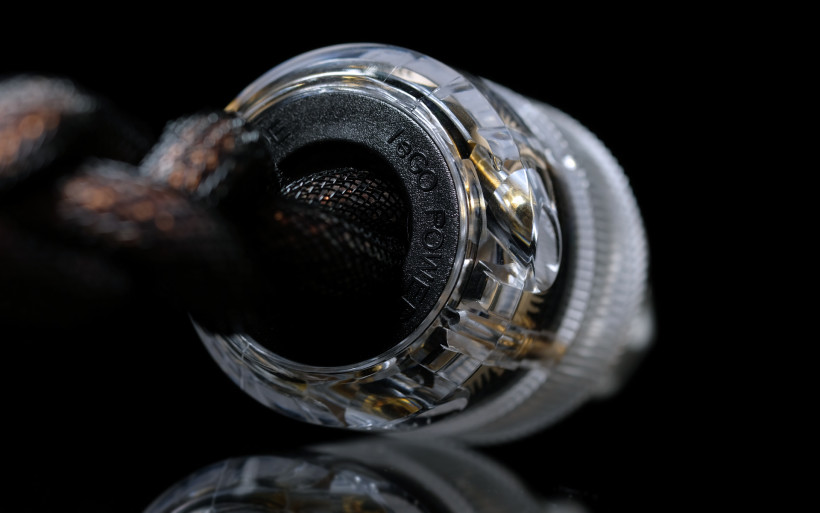 If owned audio components sound enjoyably when combined and would be too expensive to upgrade, but the urge to improve is still there, then one can consider only tweaks able to work with what’s already on duty. Those related to cleaning up power lines happen to be the most potent and the safest I’m aware of, and that’s where today’s product from Lithuania directly comes into play. LessLoss C-MARC Firewall 64X is a passive filtering device designed to work additively in-between power cords and hardware featuring IEC inlets. This company’s goods are known for utmost transparent voicing and today’s might follow accordingly. But most importantly, if it does indeed, then this feature in particular yet combined with its universal functionality might be just the product our audiophile has been searching for. Well, is it?
If owned audio components sound enjoyably when combined and would be too expensive to upgrade, but the urge to improve is still there, then one can consider only tweaks able to work with what’s already on duty. Those related to cleaning up power lines happen to be the most potent and the safest I’m aware of, and that’s where today’s product from Lithuania directly comes into play. LessLoss C-MARC Firewall 64X is a passive filtering device designed to work additively in-between power cords and hardware featuring IEC inlets. This company’s goods are known for utmost transparent voicing and today’s might follow accordingly. But most importantly, if it does indeed, then this feature in particular yet combined with its universal functionality might be just the product our audiophile has been searching for. Well, is it?
Build
Today’s C-MARC Firewall 64X model is filed at the LessLoss site under the ‘Conditioners’ tab and labeled as a ‘Current Conditioning Unit’. This naming scheme is neither new nor mysterious, though power conditioners usually arrive as far bigger boxes capable of handling several devices all at once. Nonetheless, this review’s product was designed to do the very same core job, namely improve one’s power line via stripping it from pollution prior to its spread across connected audio hardware. It’s safe to say that this goal is common in the industry, but how it’s achieved is the key difference between manufacturers, and the LessLoss approach represented by this writing’s goods is also unique.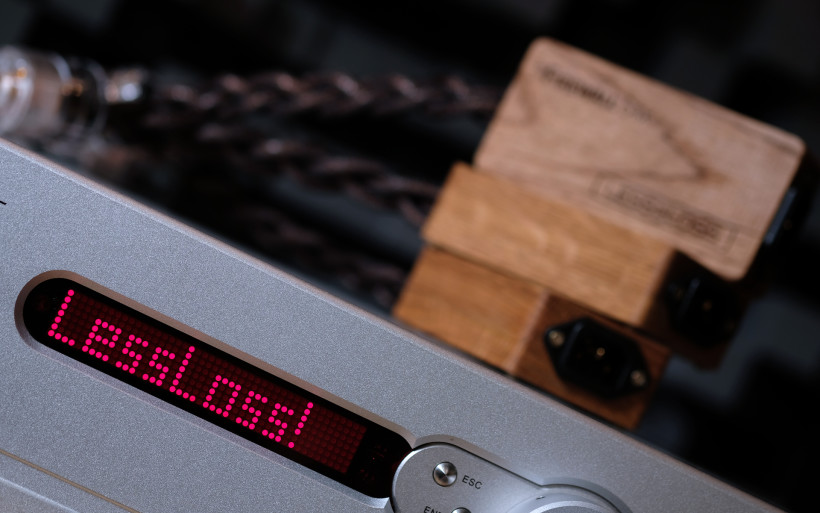 LessLoss C-MARC Firewall 64X is as compact as it is self-explanatory in use. Its solid oaken enclosure measures (WxDxH) 65x135x35mm. This core part with key internals inside sports one C14 IEC inlet at its one end, whereas the 190mm long C-MARC cable finished with a C13 female plug is found fixed firmly at the other. Just as it was the case with the same operation’s power cords, the latter component’s contact springs on purpose provide very strong grip to secure tight lock with an IEC inlet they’re mated to. This connector isn’t a typical off-the-shelf suspect; its copper bars have been hand-polished and just under its translucent body there’s a large vibration damping insert made of fins precisely cut by a laser. According to LessLoss, all listed measures impact performance and as such are vital to the end result. It’s been known for years that this audio house is as much into resonance control as it is in silence, and today’s item follows in the same exact vein.
LessLoss C-MARC Firewall 64X is as compact as it is self-explanatory in use. Its solid oaken enclosure measures (WxDxH) 65x135x35mm. This core part with key internals inside sports one C14 IEC inlet at its one end, whereas the 190mm long C-MARC cable finished with a C13 female plug is found fixed firmly at the other. Just as it was the case with the same operation’s power cords, the latter component’s contact springs on purpose provide very strong grip to secure tight lock with an IEC inlet they’re mated to. This connector isn’t a typical off-the-shelf suspect; its copper bars have been hand-polished and just under its translucent body there’s a large vibration damping insert made of fins precisely cut by a laser. According to LessLoss, all listed measures impact performance and as such are vital to the end result. It’s been known for years that this audio house is as much into resonance control as it is in silence, and today’s item follows in the same exact vein.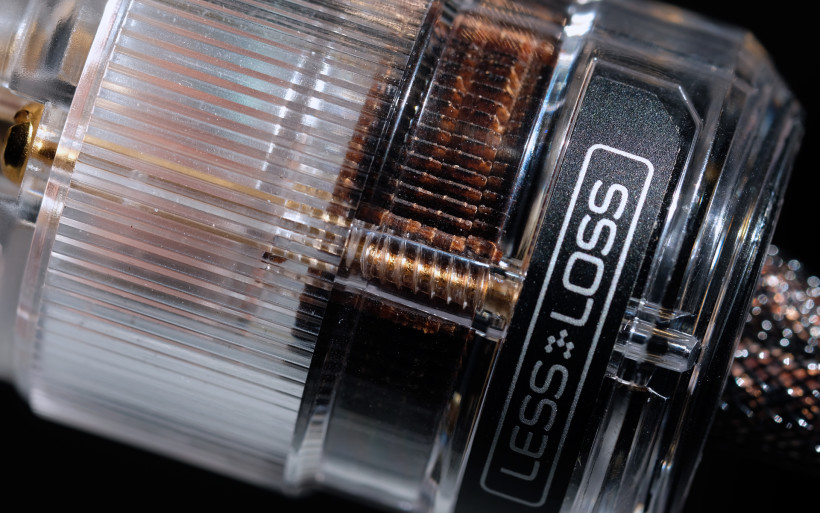 As a visually simple and honest wooden box with a short cord attached to it, LessLoss C-MARC Firewall 64X scores low on bling yet gives no reasons to be picky as far as its build goes. In hand it feels like a finely assembled quality object, that’s for sure, and nice engravings add to this effect. The product was designed to work its noise-killing magic unseen, hence most likely behind a rack full of stuff. These firewall modules can also be used in line ad infinitum to increase the decontamination effect. Since three were sent my way, this subject in particular I intended to thoroughly investigate.
As a visually simple and honest wooden box with a short cord attached to it, LessLoss C-MARC Firewall 64X scores low on bling yet gives no reasons to be picky as far as its build goes. In hand it feels like a finely assembled quality object, that’s for sure, and nice engravings add to this effect. The product was designed to work its noise-killing magic unseen, hence most likely behind a rack full of stuff. These firewall modules can also be used in line ad infinitum to increase the decontamination effect. Since three were sent my way, this subject in particular I intended to thoroughly investigate. The Firewall technology isn’t new, the team LessLoss has been pursuing this route for years and it changed significantly over time. The basic guideline involves their proprietary Skin-filtering technology meant to block HF noise pollution travelling from our home grid to audio hardware via power cables. It’s always served passively thus with no active circuitry on-board, whereas the ‘no coils and no caps’ twist makes it quite special and far more difficult to successfully implement than it seems. This novel filtering idea originated from LessLoss DFPC (Dynamic Filtering Power Cable), at first arrived as a large $5’000 wooden power strip, and then downscaled to white multi-layered etched circuit board modules Srajan wrote about here. The current Firewall lineup is based on the most advanced revision of this tech, which has nothing in common with the previous one other than the same core principle.
The Firewall technology isn’t new, the team LessLoss has been pursuing this route for years and it changed significantly over time. The basic guideline involves their proprietary Skin-filtering technology meant to block HF noise pollution travelling from our home grid to audio hardware via power cables. It’s always served passively thus with no active circuitry on-board, whereas the ‘no coils and no caps’ twist makes it quite special and far more difficult to successfully implement than it seems. This novel filtering idea originated from LessLoss DFPC (Dynamic Filtering Power Cable), at first arrived as a large $5’000 wooden power strip, and then downscaled to white multi-layered etched circuit board modules Srajan wrote about here. The current Firewall lineup is based on the most advanced revision of this tech, which has nothing in common with the previous one other than the same core principle. Passive components found inside this review’s products are executed radically differently in comparison to now discontinued LessLoss filtering circuit boards. This operation’s CEO Louis Motek explained that not more than several years back the new 3D printed solution this review’s goods sport, wasn’t even available. It’s based on precisely positioned directional metallic particles within a thermoplastic carrier, and physically arrives as a cylindrical object of – as Louis put it – much lower and more stable noise floor in comparison to Ferrites. A generous drop of glue inside of today’s arrivals prevented yours truly from taking a peek in there, but what’s under the hood is no secret; one 3D printed barrel of humongous 20mm2 copper cross sectional area per line to have all three in total (Live, Neutral and Ground) conditioned. Ground lines in earlier Firewall iterations weren’t filtered.
Passive components found inside this review’s products are executed radically differently in comparison to now discontinued LessLoss filtering circuit boards. This operation’s CEO Louis Motek explained that not more than several years back the new 3D printed solution this review’s goods sport, wasn’t even available. It’s based on precisely positioned directional metallic particles within a thermoplastic carrier, and physically arrives as a cylindrical object of – as Louis put it – much lower and more stable noise floor in comparison to Ferrites. A generous drop of glue inside of today’s arrivals prevented yours truly from taking a peek in there, but what’s under the hood is no secret; one 3D printed barrel of humongous 20mm2 copper cross sectional area per line to have all three in total (Live, Neutral and Ground) conditioned. Ground lines in earlier Firewall iterations weren’t filtered. The Firewall family’s power branch consists of three items in total; this review’s top tier specimen ($1’272), its downscaled non-C-MARC version ($654) and a standalone DIY-ready module installed in these. In spite of the very same filtering core in both fully assembled boxes, the significant price gap between the two raises the valid question why so.
The Firewall family’s power branch consists of three items in total; this review’s top tier specimen ($1’272), its downscaled non-C-MARC version ($654) and a standalone DIY-ready module installed in these. In spite of the very same filtering core in both fully assembled boxes, the significant price gap between the two raises the valid question why so.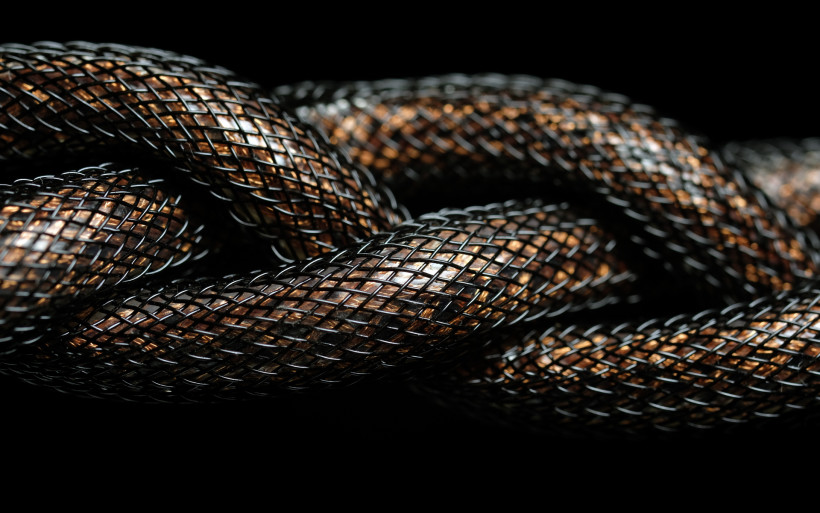 At first glance, one would associate the quite steep price hike with merely a C-MARC cable attached to today’s item, but that’s just one disparity out of four in total. The more expensive C-MARC version’s six internal copper bars are hand-polished, its C13 plug has an in-house laser cut vibration absorbing insert installed, and a special glazing applied to its Firewall module enhances vibration damping by mating this key piece more readily to the wooden enclosure. Small things? Perhaps, but after all, in high end audio, the devil is always in the detail.
At first glance, one would associate the quite steep price hike with merely a C-MARC cable attached to today’s item, but that’s just one disparity out of four in total. The more expensive C-MARC version’s six internal copper bars are hand-polished, its C13 plug has an in-house laser cut vibration absorbing insert installed, and a special glazing applied to its Firewall module enhances vibration damping by mating this key piece more readily to the wooden enclosure. Small things? Perhaps, but after all, in high end audio, the devil is always in the detail.
Sound
In order to review LessLoss C-MARC Firewall 64X modules, fidata HFAS-S10U handled storage and transport duties, then LampizatOr Pacific DAC (Living Voice 300B + KR Audio 5U4G Ltd. Ed.) took over to pass the signal to either Kinki Studio EX-M1 and Boenicke W8, or Trilogy 925 and Buchardt Audio S400. All key components were connected via LessLoss C-MARC cords to the GigaWatt PC-3 SE EVO+ power conditioner, married to the in-wall outlet via the LC-3 EVO cable by the same manufacturer. C-MARCs were also used with speakers, amber-modded Excellence ICs by Audiomica Laboratory found their place in-between key setup components, and Buchardt Audio S400 monitors occupied Soundstyle Z1 stands.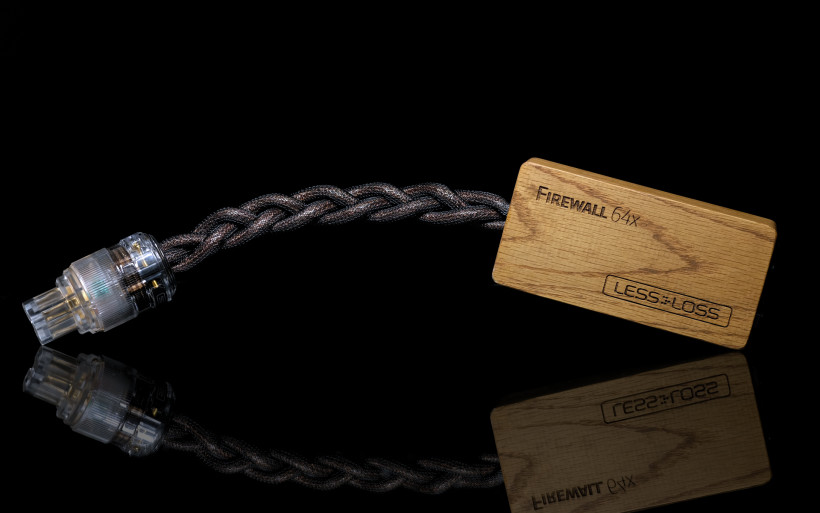 Not one but three LessLoss loaners in total allowed for various testing combinations. Logic would suggest to use one just before my power conditioner to spread the noise-killing effect widely on all connected devices, then add another Firewall in the same place, the third box shortly after and from there work my way downstream. But the decision was made to reverse the order and start from an amp with a single Lithuanian module to end with three of these in line. Once this base was covered, today’s items next landed in the same additive fashion just after the LC-3 EVO power cord located in-between the main inlet and my power conditioner. One Lithuanian module remained at the same junction, whereas the other two separately fed my transport and DAC. Then a single LessLoss loaner moved from service with my big GigaWatt to connect to the amp again, which resulted in all three main components firewalled but not my power conditioner. The described exercise allowed me to grasp the most suitable place for this review’s boxes, or so I thought. At some point I got in touch with Louis and he pointed out that the best location for his Firewall 64X filters is just before a digital source connected to a wall outlet directly, hence with no active conditioning along the road. I happily obliged and indeed this test changed a lot, however before it happened the PC-3 SE EVO+ was in constant use.
Not one but three LessLoss loaners in total allowed for various testing combinations. Logic would suggest to use one just before my power conditioner to spread the noise-killing effect widely on all connected devices, then add another Firewall in the same place, the third box shortly after and from there work my way downstream. But the decision was made to reverse the order and start from an amp with a single Lithuanian module to end with three of these in line. Once this base was covered, today’s items next landed in the same additive fashion just after the LC-3 EVO power cord located in-between the main inlet and my power conditioner. One Lithuanian module remained at the same junction, whereas the other two separately fed my transport and DAC. Then a single LessLoss loaner moved from service with my big GigaWatt to connect to the amp again, which resulted in all three main components firewalled but not my power conditioner. The described exercise allowed me to grasp the most suitable place for this review’s boxes, or so I thought. At some point I got in touch with Louis and he pointed out that the best location for his Firewall 64X filters is just before a digital source connected to a wall outlet directly, hence with no active conditioning along the road. I happily obliged and indeed this test changed a lot, however before it happened the PC-3 SE EVO+ was in constant use.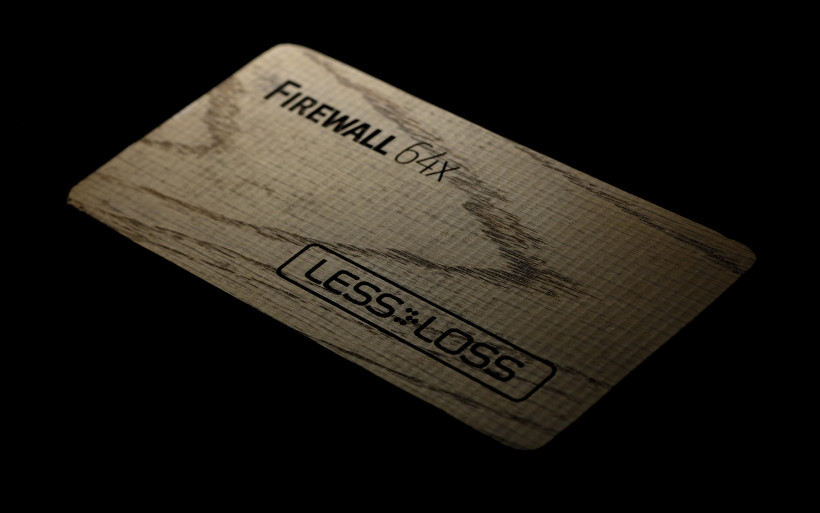 In order to move with the story any further, I’ll allow myself to backtrack a bit to my previous LessLoss adventures. The full awareness of what this company is into the most, namely widely applicable noise rejection, surely helped in today’s assignment. Lithuanian power cords and speaker cables introduced impactful and meaningful changes, though quite specific in action. Both item types audibly lowered the noise floor within my setup, which resulted in its darker backdrop, easier nuance comprehensibility and more orderly image. Virtual sound sources with both LessLoss cable types on duty became rounder, more tangible and separated finer. All this led to easier music intake; less choppiness in favour of greater textural complexity, edge replaced via more lively and softer approach, dryness off and increased tunefulness on, plus organic finishing touches. C-MARCs morphed sensibly stuffy and stale vibe into something more open, whereas their thorough cleanup of grain upped visibility of musical plankton suspended in the air, which naturally resulted in increased insight delivered in an effortless way.
In order to move with the story any further, I’ll allow myself to backtrack a bit to my previous LessLoss adventures. The full awareness of what this company is into the most, namely widely applicable noise rejection, surely helped in today’s assignment. Lithuanian power cords and speaker cables introduced impactful and meaningful changes, though quite specific in action. Both item types audibly lowered the noise floor within my setup, which resulted in its darker backdrop, easier nuance comprehensibility and more orderly image. Virtual sound sources with both LessLoss cable types on duty became rounder, more tangible and separated finer. All this led to easier music intake; less choppiness in favour of greater textural complexity, edge replaced via more lively and softer approach, dryness off and increased tunefulness on, plus organic finishing touches. C-MARCs morphed sensibly stuffy and stale vibe into something more open, whereas their thorough cleanup of grain upped visibility of musical plankton suspended in the air, which naturally resulted in increased insight delivered in an effortless way.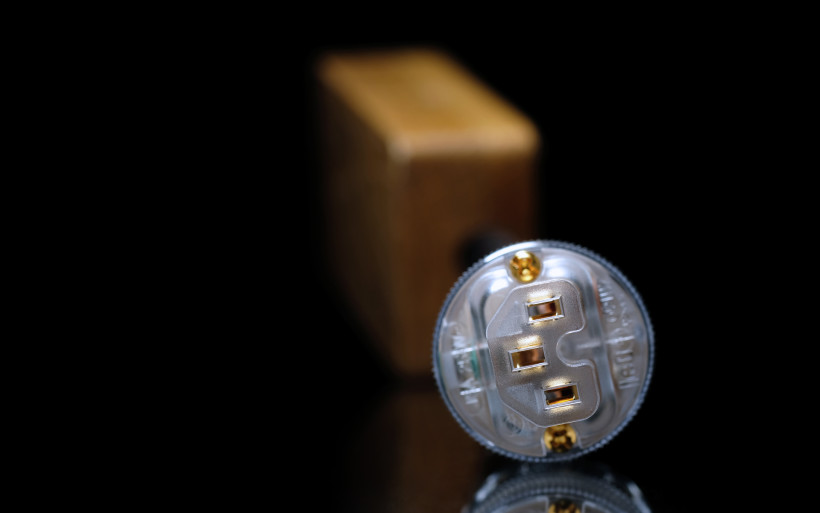 If singled out, each measure listed above would’ve been of minor importance. Yet combined altogether they led to clearly greater musical good. No tonal balance shifts in any particular direction and no cost to essential performance were the key upshots. Months of C-MARCs’ usage in my daily routine provided enough evidence to fully understand that their unique ‘flavourless’ attitude happens to be their core virtue. The two functionally different Lithuanians act on the very primary level as top musical tools for any suitable hardware to play with. Once connected to any newcomer product, they simply allow it to speak for itself in unaltered honest fashion and quickly map its core voicing, which in effect spells time savings on my end. A pristine canvas and the revelatory power of C-MARC products are very useful in my daily work, hence the ‘flavourless’ word listed above describes their major pro in this specific context, not a con. Far from it.
If singled out, each measure listed above would’ve been of minor importance. Yet combined altogether they led to clearly greater musical good. No tonal balance shifts in any particular direction and no cost to essential performance were the key upshots. Months of C-MARCs’ usage in my daily routine provided enough evidence to fully understand that their unique ‘flavourless’ attitude happens to be their core virtue. The two functionally different Lithuanians act on the very primary level as top musical tools for any suitable hardware to play with. Once connected to any newcomer product, they simply allow it to speak for itself in unaltered honest fashion and quickly map its core voicing, which in effect spells time savings on my end. A pristine canvas and the revelatory power of C-MARC products are very useful in my daily work, hence the ‘flavourless’ word listed above describes their major pro in this specific context, not a con. Far from it.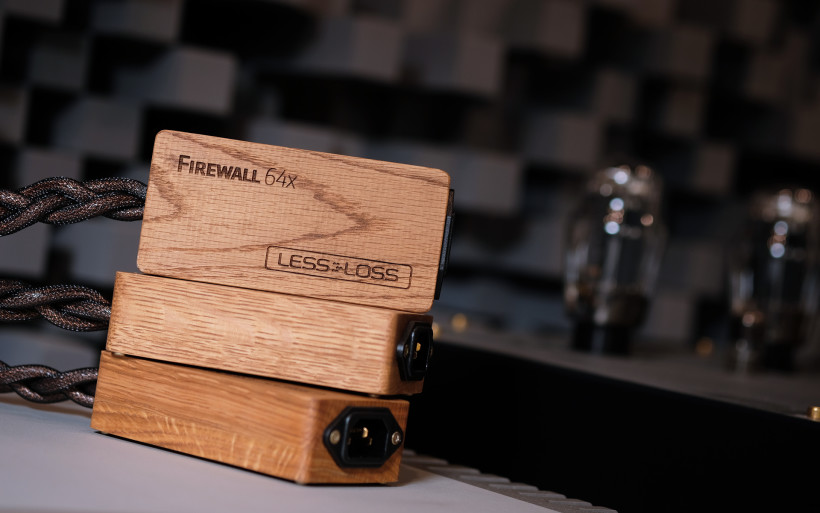 Although designed to perform the same cleanup job, the LessLoss C-MARC power cable proved to be more potent in comparison to its speaker sibling, as items of the former breed tend to at my place. Now to finally move to today’s arrivals, all three quickly were found equally effective and sonically clearly made by the same audio house. It took a mere two swaps with and without these items to get the gist, the already well known silencing game was afoot yet again. Put shortly, everything I wrote up above clearly applied to C-MARC Firewall 64X specimens. Their audible input was familiar and comforting yet not surprising, in contrast to their potency increase if used in series.
Although designed to perform the same cleanup job, the LessLoss C-MARC power cable proved to be more potent in comparison to its speaker sibling, as items of the former breed tend to at my place. Now to finally move to today’s arrivals, all three quickly were found equally effective and sonically clearly made by the same audio house. It took a mere two swaps with and without these items to get the gist, the already well known silencing game was afoot yet again. Put shortly, everything I wrote up above clearly applied to C-MARC Firewall 64X specimens. Their audible input was familiar and comforting yet not surprising, in contrast to their potency increase if used in series.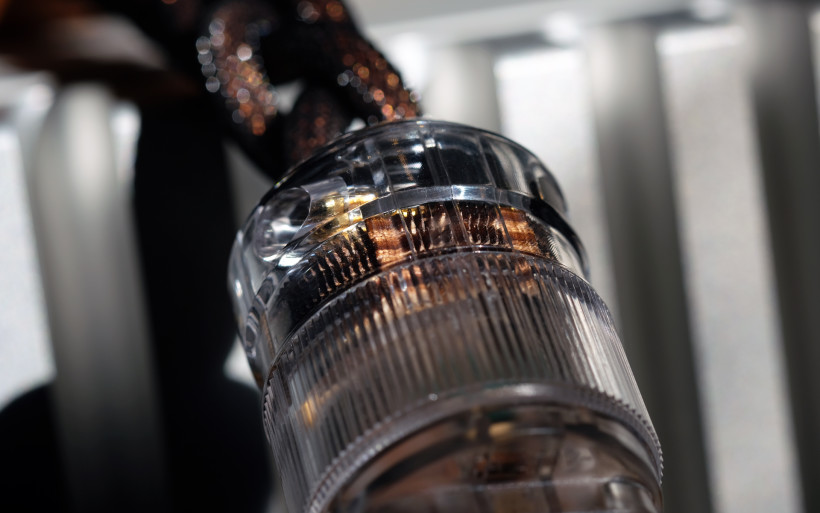 As expected, a single C-MARC Firewall 64X connected to one end of the same company’s power cord and then to my Trilogy 925 made this machine’s inherently bold, thick and dense character audibly more explicit and present, which I took as a good start. The sensation was quite comparable to having the alike voiced power cable yet of substantially higher tier, which led me to conclude that noise rejection introduced by this cord was further amplified via today’s magical box. To exclude any random factor, the Lithuanian power cord replaced by Audiomica Laboratory’s product resulted in similar observations. With this cable connected to just one C-MARC Firewall 64X, the 925 got chunkier, warmer, more polite, a bit slower and it created bigger sound sources. However, without the Firewall the effect was yet again coarser, texturally poorer, less precise and background noise got a fair bit stronger. The takeaway was that the wooden box truly did something!
As expected, a single C-MARC Firewall 64X connected to one end of the same company’s power cord and then to my Trilogy 925 made this machine’s inherently bold, thick and dense character audibly more explicit and present, which I took as a good start. The sensation was quite comparable to having the alike voiced power cable yet of substantially higher tier, which led me to conclude that noise rejection introduced by this cord was further amplified via today’s magical box. To exclude any random factor, the Lithuanian power cord replaced by Audiomica Laboratory’s product resulted in similar observations. With this cable connected to just one C-MARC Firewall 64X, the 925 got chunkier, warmer, more polite, a bit slower and it created bigger sound sources. However, without the Firewall the effect was yet again coarser, texturally poorer, less precise and background noise got a fair bit stronger. The takeaway was that the wooden box truly did something!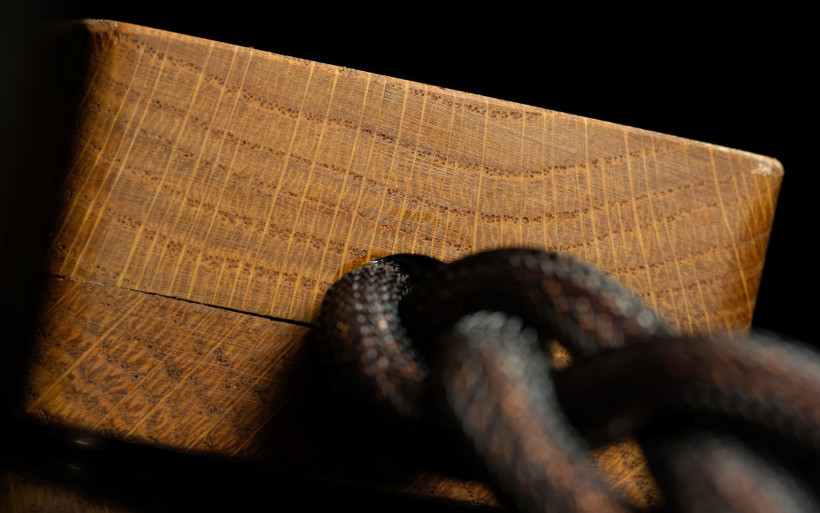 Just one C-MARC Firewall 64X clearly had an impact on my 925 and the EX-M1 deck with a different set of speakers confirmed my findings, however two Lithuanian units (one plugged into the other and then connected to one of the two integrated amps in use) were also audible. The quality increase didn’t skyrocket, but was there. I can’t think of any numbers to frame this observation into something more understandable, so let’s stick to the basics; one box on duty with either the 925 or EX-M1 was clearly noticeable, the second less so albeit still present to a degree, whereas the third addition remained in the ‘barely audible and not always’ zone. Nonetheless, my ears registered well what just one C-MARC Firewall 64X did, that’s the important bit.
Just one C-MARC Firewall 64X clearly had an impact on my 925 and the EX-M1 deck with a different set of speakers confirmed my findings, however two Lithuanian units (one plugged into the other and then connected to one of the two integrated amps in use) were also audible. The quality increase didn’t skyrocket, but was there. I can’t think of any numbers to frame this observation into something more understandable, so let’s stick to the basics; one box on duty with either the 925 or EX-M1 was clearly noticeable, the second less so albeit still present to a degree, whereas the third addition remained in the ‘barely audible and not always’ zone. Nonetheless, my ears registered well what just one C-MARC Firewall 64X did, that’s the important bit.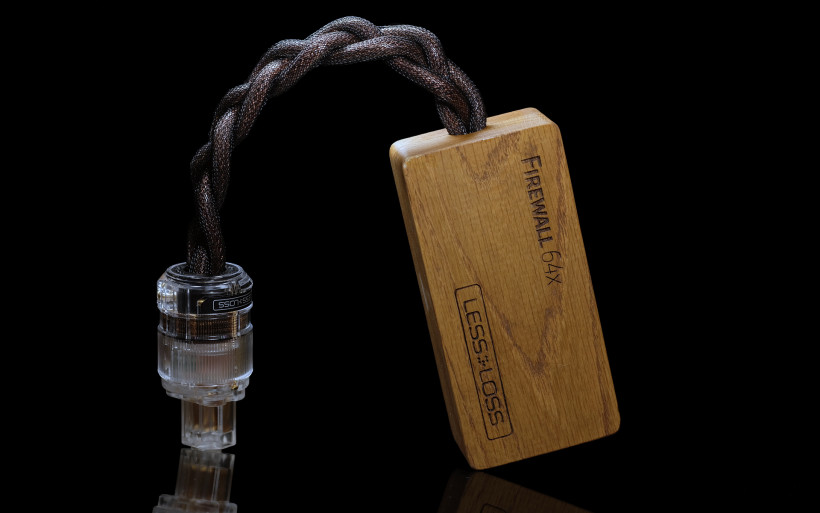 Then, in one by one fashion as previously with amps, all three C-MARC Firewall 64X units landed in-between GigaWatt’s LC-3 EVO power cord and PC-3 SE EVO+ power conditioner. Their application at this specific junction led to the firm assumption that power cleaned at the very first base should benefit everything downstream and that’s what was heard indeed. The result with a single wooden box before my PC-3 SE EVO+ got even more audible than with any of integrated machines used earlier, although pleasantly familiar in action. The second Firewall upped the quality ante in the same direction and slightly more potently than it was the case of the amps. However, the third C-MARC Firewall 64X was quite undetectable regardless of music and hardware swaps involved.
Then, in one by one fashion as previously with amps, all three C-MARC Firewall 64X units landed in-between GigaWatt’s LC-3 EVO power cord and PC-3 SE EVO+ power conditioner. Their application at this specific junction led to the firm assumption that power cleaned at the very first base should benefit everything downstream and that’s what was heard indeed. The result with a single wooden box before my PC-3 SE EVO+ got even more audible than with any of integrated machines used earlier, although pleasantly familiar in action. The second Firewall upped the quality ante in the same direction and slightly more potently than it was the case of the amps. However, the third C-MARC Firewall 64X was quite undetectable regardless of music and hardware swaps involved.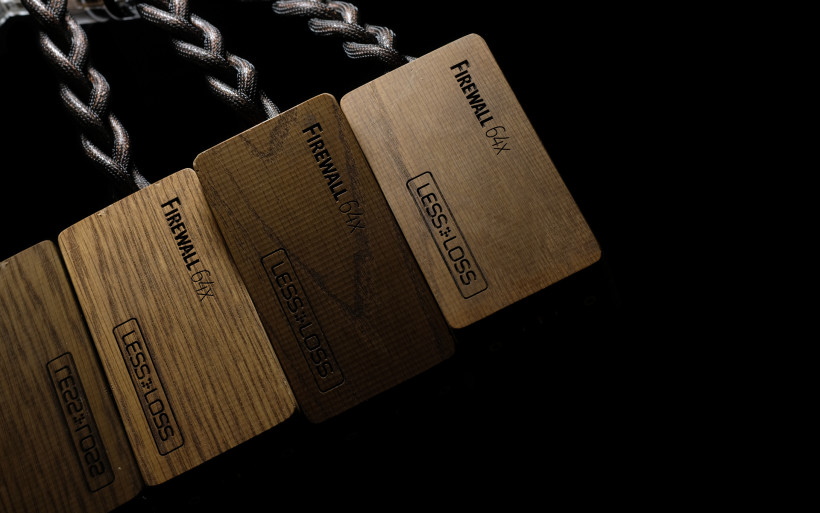 Having everything above in mind, a single LessLoss product just before my power conditioner stayed put and the other two now connected to digital devices. Of all experiments conducted thus far, my ears mapped three C-MARC Firewall 64X applied in these specific locations as the most effective. The quality spike was noticeable and result of familiar sort yet again, but the new order was quite expected too. The wooden trio on the decontamination job as early as possible was the still commonsensical approach, which implied junk blocked from moving downstream. Garbage in, garbage out, no? It’s fair to say that my DAC is inherently sensitive to power related treatment and so is my fidata deck. But in order to double-check these findings, one LessLoss unit shifted from GigaWatt’s conditioner to the 925 again and effectiveness of all Lithuanian boxes decreased a bit, which at this point reassured me in ‘the closer to the main wall outlet, the better’ as their best application scenario.
Having everything above in mind, a single LessLoss product just before my power conditioner stayed put and the other two now connected to digital devices. Of all experiments conducted thus far, my ears mapped three C-MARC Firewall 64X applied in these specific locations as the most effective. The quality spike was noticeable and result of familiar sort yet again, but the new order was quite expected too. The wooden trio on the decontamination job as early as possible was the still commonsensical approach, which implied junk blocked from moving downstream. Garbage in, garbage out, no? It’s fair to say that my DAC is inherently sensitive to power related treatment and so is my fidata deck. But in order to double-check these findings, one LessLoss unit shifted from GigaWatt’s conditioner to the 925 again and effectiveness of all Lithuanian boxes decreased a bit, which at this point reassured me in ‘the closer to the main wall outlet, the better’ as their best application scenario.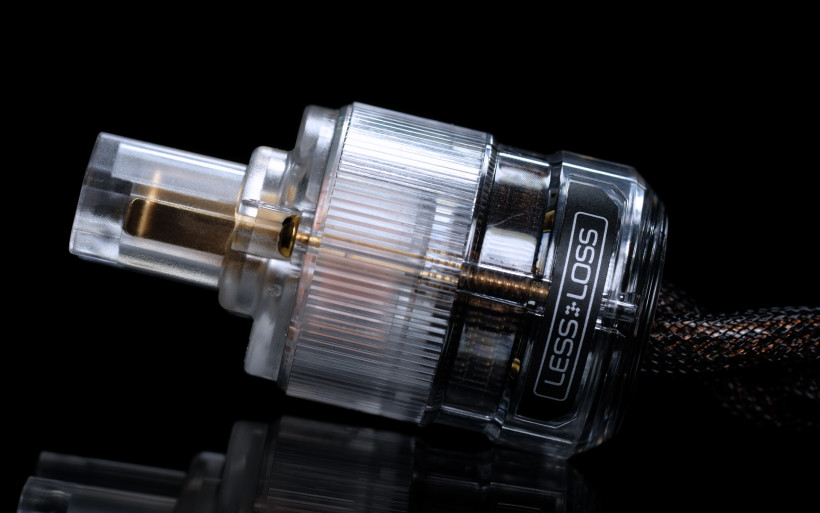 Being aware that three Firewalls or more are a rather costly luxurious option, several experiments with just a single LessLoss C-MARC Firewall 64X connected to one machine at a time (and all fed via the PC-3 SE EVO+) were conducted. The Lithuanian noise-killing effect audibly moved sonics up on the quality ladder in each case, albeit with different strength; from the Pacific DAC as the one which benefited the most, to power conditioner, then transport/storage and lastly my amps. That’s why if only one LessLoss can be had, the best place for it in setups similar to mine would be just before a DAC or even earlier, prior to a power conditioner/strip/regenerator, whatever is on duty, however…
Being aware that three Firewalls or more are a rather costly luxurious option, several experiments with just a single LessLoss C-MARC Firewall 64X connected to one machine at a time (and all fed via the PC-3 SE EVO+) were conducted. The Lithuanian noise-killing effect audibly moved sonics up on the quality ladder in each case, albeit with different strength; from the Pacific DAC as the one which benefited the most, to power conditioner, then transport/storage and lastly my amps. That’s why if only one LessLoss can be had, the best place for it in setups similar to mine would be just before a DAC or even earlier, prior to a power conditioner/strip/regenerator, whatever is on duty, however…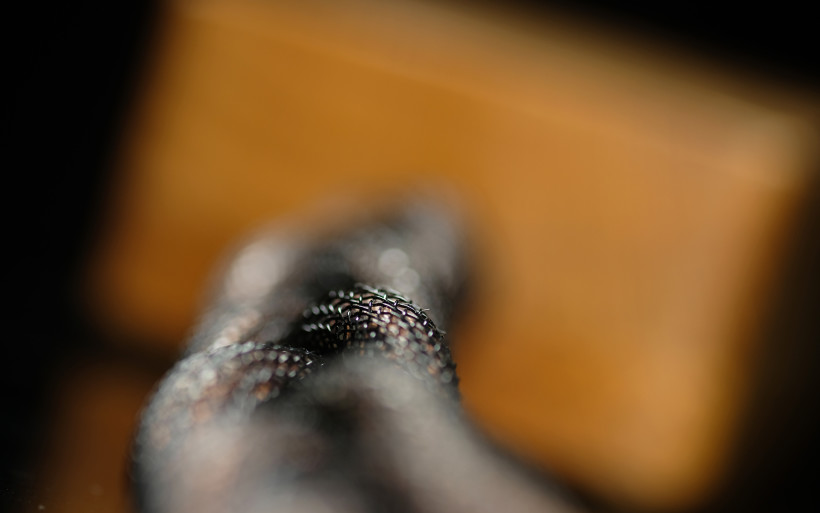 At this point I was ready to wrap this writing, but in the nick of time Louis advised me to try one specific triangulation, which I did, and from this point onward things gained momentum. Knowing how well my DAC responded to this review’s items, their direct impact on this specific machine was the last thing to do, my power conditioner had to be bypassed. Of course this short detour translated to the PS-3 SE EVO+’s surge protection gone, Lithuanians sport none after all, but for the sake of pursuing ultimate sonics I took the risk. To know what’s what, the GigaWatt fed my DAC via one LessLoss C-MARC and a second same type and length power cable finished with today’s trio was on standby directly connected to the main outlet. Two power cables of the same exact type and length enabled fairly quick swaps and what happened next was quite unexpected. It’s worth knowing that all remaining components were connected to the GigaWatt.
At this point I was ready to wrap this writing, but in the nick of time Louis advised me to try one specific triangulation, which I did, and from this point onward things gained momentum. Knowing how well my DAC responded to this review’s items, their direct impact on this specific machine was the last thing to do, my power conditioner had to be bypassed. Of course this short detour translated to the PS-3 SE EVO+’s surge protection gone, Lithuanians sport none after all, but for the sake of pursuing ultimate sonics I took the risk. To know what’s what, the GigaWatt fed my DAC via one LessLoss C-MARC and a second same type and length power cable finished with today’s trio was on standby directly connected to the main outlet. Two power cables of the same exact type and length enabled fairly quick swaps and what happened next was quite unexpected. It’s worth knowing that all remaining components were connected to the GigaWatt.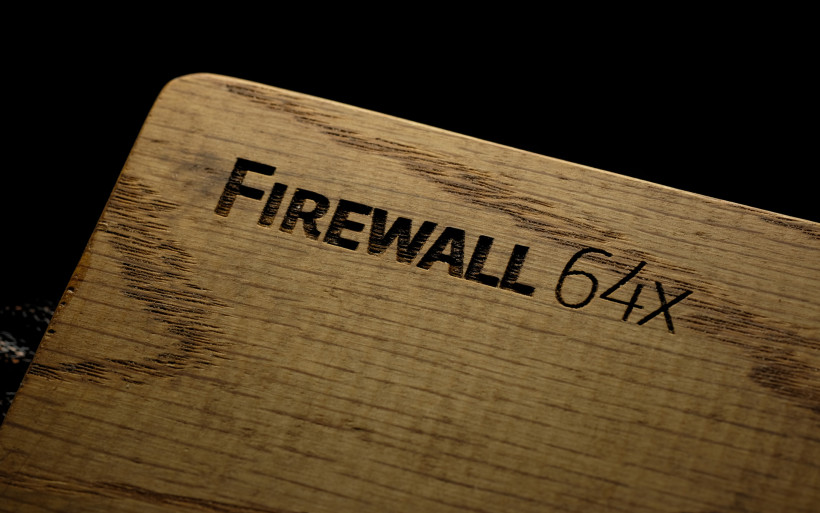 The difference between direct versus indirect power feed only to the Pacific was anything but small. The latter connection sketched thinner image outlines of noticeably smaller frame, put these further from my ears, sported a bit more grain and ultimately leaned more towards insight than pleasure. My DAC directly powered via the C-MARC family sounded fleshier, more organic, a bit rounder and fuller, in a way more musical and civilized. At first it seemed to be slower and voiced darker due to more pristine backdrop in comparison. However, this impression faded once repertoire full of outrageous bass slams and upstairs presence was engaged. The C-MARC loom was easily as agile as the GigaWatt yet put bigger, more present and tangible sound sources on the pedestal instead. This fight was no apples against oranges case, not at all. Yes, the very costly DAC of mine lost its protection, but gained extra moisture and spatial presence, which led to a substantial increase in pleasure. But most importantly, is this how this machine should sound in the first place? Was this the very first time its original highly organic yet still exceptionally resolving character emerged past being subjected to GigaWatt’s own input? I couldn’t tell, this requires further investigation in the future and with different hardware involved. But the most prominent personal upshot is that I’ve learnt something new and very valuable during this assignment.
The difference between direct versus indirect power feed only to the Pacific was anything but small. The latter connection sketched thinner image outlines of noticeably smaller frame, put these further from my ears, sported a bit more grain and ultimately leaned more towards insight than pleasure. My DAC directly powered via the C-MARC family sounded fleshier, more organic, a bit rounder and fuller, in a way more musical and civilized. At first it seemed to be slower and voiced darker due to more pristine backdrop in comparison. However, this impression faded once repertoire full of outrageous bass slams and upstairs presence was engaged. The C-MARC loom was easily as agile as the GigaWatt yet put bigger, more present and tangible sound sources on the pedestal instead. This fight was no apples against oranges case, not at all. Yes, the very costly DAC of mine lost its protection, but gained extra moisture and spatial presence, which led to a substantial increase in pleasure. But most importantly, is this how this machine should sound in the first place? Was this the very first time its original highly organic yet still exceptionally resolving character emerged past being subjected to GigaWatt’s own input? I couldn’t tell, this requires further investigation in the future and with different hardware involved. But the most prominent personal upshot is that I’ve learnt something new and very valuable during this assignment.
Summary
Without direct experience, it’s very easy to label C-MARC Firewall 64X as a typical snake oil case. A rather costly petite wooden box filled with stuff most people won’t even bother to read about, is asking for nothing but trouble. However, its audible action is what naysayers might find truly troublesome instead. All it takes is to plug today’s Firewall in and have a listen. Simple, ain’t it?
The LessLoss C-MARC Firewall 64X is built to last, looks nice and is manageable as far as its compliance with other products goes. Visual value of where all the money went is modest at best with this item, in contrast to its far higher score on efficiency count. But if you’re not sold on the idea of spending four figures for such an item and are keen on soldering, today’s core ingredient meant for DIY applications can be had for far less and the fully assembled regular umbilical Firewall 64X model isn’t too far off as well. Still, any preconceived notions towards this and similar products, have to be defeated first. That’s the crucial first step to make prior to going the silent Lithuanian route.
The LessLoss C-MARC Firewall 64X at first seemed to be a functionally universal additive aimed at financially capable enthusiasts with everything else already sorted. Flavouring shifts outside the door plus audible performance boost within each junction of my setup, are clear indicators of a job well done. In fact, well enough to now encourage you to try for yourself either today’s noise-killer, or any of its more affordable kin. If not to buy one in a heartbeat, then perhaps just for the educational sake of witnessing how beneficial silence injection can be for our components. But most importantly, as a link between my DAC and power cable connected to a wall outlet directly, the LessLoss C-MARC Firewall 64X was profoundly effective, very much unexpected, all in all superb. Used in that way it surely has what it takes to dethrone many full-sized costly power cleaners, of course as long as one’s willing to get on without their protective circuits and multiple outlets. ‘Till next time!
Associated Equipment:
- Amplifier: Trilogy 925, Kinki Studio EX-M1
- DAC: LampizatOr Pacific (KR Audio T-100 / Living Voice 300B + KR Audio 5U4G Ltd. Ed.)
- Speakers: Boenicke Audio W8, Buchardt Audio S400
- Transport: fidata HFAS-S10U, Soundaware A1
- Speaker cables: Audiomica Laboratory Celes Excellence, LessLoss C-MARC
- Interconnects: Audiomica Laboratory Erys Excellence
- Power components: Gigawatt PC-3 SE EVO+, Gigawatt PF-2 + Gigawatt LC-2 MK2 + Forza AudioWorks Noir Concept/Audiomica Laboratory Ness Excellence/LessLoss C-MARC
- Rack: Franc Audio Accesories Wood Block Rack
- Music: NativeDSD
Retail prices of reviewed components in EU (excl. tax):
- LessLoss C-MARC Firewall 64X: $1’272
- LessLoss Firewall 64X: $654
- LessLoss Firewall 64X DIY module: $400
Manufacturer: LessLoss


